INTRODUCTION
By the middle of the 20´th century, when Claude Lévi-Strauss entered the arena, it seems like most anthropologists had given up hope of inventing the "Grand Theory" about what a human being actually is, and almost all of them had left the Darwinian evolutionary approach, initiatiated by the great 19th pioneers such as for example Lewis Henry Morgan and Friedrich Engels and later in the beginning of the 20th by Robert Briffault, as well as their revolutionary discovery that not only men but also women might wield power and even probably were the ones who inventad culture.
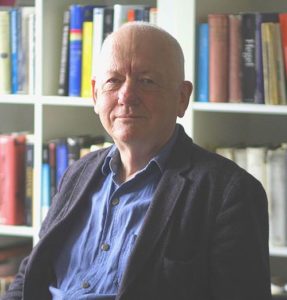 The evolutionary anthropologist Chris Knight gives an extensive and illuminating report of the history of anthropology, and its 20th century scholars ideological political turn away from true science, in his famous Blood Relations, 1987 as well as of how to understand and assess the work of Levi-Strauss, in relation to its cultural, historian, political context, not at least to the postcolonial shift that ocurred after the the loss of the colonies by WWII. Inspirerad by the leading figure in theoretical linguistics, Jakobson, who claimed he had split the atom of linguistics, "the phoneme", Lévi-Strauss concluded that linguistics had achieved the stature of a true science, universal and objective, penetrating beneath the surface of appearances to the basic mechanics of nature.
The evolutionary anthropologist Chris Knight gives an extensive and illuminating report of the history of anthropology, and its 20th century scholars ideological political turn away from true science, in his famous Blood Relations, 1987 as well as of how to understand and assess the work of Levi-Strauss, in relation to its cultural, historian, political context, not at least to the postcolonial shift that ocurred after the the loss of the colonies by WWII. Inspirerad by the leading figure in theoretical linguistics, Jakobson, who claimed he had split the atom of linguistics, "the phoneme", Lévi-Strauss concluded that linguistics had achieved the stature of a true science, universal and objective, penetrating beneath the surface of appearances to the basic mechanics of nature.

Thus his ambition was now to render the disciplin of anthropology the same kind of stature, by carrying out the same reducionist atomistic manner in breaking down the myths into "mythemes". An endeavour which would have been welcomed by Chris Knight if it just would have been grounded in a scientifically evolutionary approach, as most of the anthropologists with such an orientation by then had left the field of anthropology for to instead follow the more simplistic track of sociobiology. But, as Chris Knight very elucidating argues, neither did Lévi-Strauss consider any such approach, but grounded his theory in a kind of loose speculative theorising about universals in human cognitive processing and myth-making, without any seriously scientific and coherent attempt to connect it to its evolutionary basis. Also Heide Göttner-Abendroth comments (scroll down!) his theorising about the Origin of Society as very unlogic.
In this little brief survey I am not going to comment the major part of Levi-Strauss´work though, comprising his theorising about the universals in mythes and rites, as its just too much. This has furthermore to be respectfully treated as he really invested considerable endeavor in collecting and analysing a multitude of myths from across the world ( to its greatest extent from America, though), and as this systemising work has become of great benefit to Chris Knight´s further investigations of the universal patterns inherit in the myths and their transformations from matriarchal to patriarchal interpretations of the big drama between the sexes and their hierarchical positions in relation to the overall mythology / cosmology.
As I myself haven´t read anything at all of Lévi-Strauss´four volume work of "Mythologic", I will instead recommend the excellent review of Chris Knight in his classic Blood relations 1987, as he seems to have made a great effort in penetrating this work in order to assess Lévi-Strauss´ claim of having extracted the one and only fundamental myth of humanity and its origin and function in human culture, by comparing it to his own theory of the female menstrual strike and the taboo of eating ones own kill. (Scroll down for more info!)
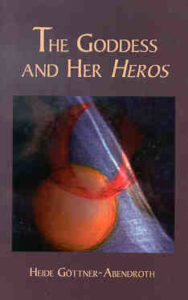
To me, as a layperson, this chapter of mythology is an inexhaustible universe much too complicated to penetrate and assess so far. If I had another life to live and was only 20, I would have made a comparative study between Lévi-Strauss´work and the prehistoric Goddess mythology and its transformations during the patriarchal pole shift (using Bachofen´s term) accounted for in Heide Göttner Abendroth´s famous and elucidating classic: The Goddess and her Heros, (first published 1980 in German) as it unfolds an inner coherence in the matriarchal prehistoric Goddess-mythology making all the pieces of the jigsaw puzzle to fit in, and offers such a wonderful experience of getting connected to your cultural history as a woman far away backwards in time, even to the Origin of Society.
Not at least from having been offered this extra piece of the jigsaw-puzzle from an academic within the establisment; namely Chris Knight (hopefully making its male bias cracking down eventually) since I now, after having read his The Blood Relations, 1987 have got my suspicion confirmed that Levi-Strauss completely misses the fact, shown by Heide Göttner Abendroth in her The Goddess and her Heros, that all the later patriarchal myths consists of distortions of earlier matriarchal "totem"- /animistic and / or Goddess-related myths and cosmological concepts, in order to use it against the women themselves, and their ability to wield power.
Chris Knight is furthermore a member of RAG; Radical Anthropologists Group, giving evening lessons and publishing articles in its journal and one of the very few anthropologists who has got the courage to draw attention to the THE ELEPHANT IN THE ROOM, as follows:
MENSTRUATION AND THE ORIGINS OF CULTURE, 1987
A reconsideration
of Lévi-Strauss’s work on symbolism and myth
Chris Knight
Menstruation and the origins of culture Page 491
"Magical myths and fairy tales the world over centre around a limited number of themes. Among the most common are the following:
1. Death and subsequent rebirth;
2. Marriage to animal brides or bridegrooms;
3. Metamorphosis or “skin-change”;
4. Dragon-slaying;
5. The stealing of ritual power from ancestral women;
6. The stealing of ritual power from monsters, giants or dragons.
"This thesis has shown that male initiation rituals throughout much of the world bear a systematic relationship to female expressions of ritual power in the form of menstruation and childbirth. Through such rituals, men invert female menstrual power, retaining its formal properties whilst detaching it from women and using it as a weapon against them. The thesis has further shown the systematic relationship between these rituals and traditions of magical mythology.
It has been shown that in male initiation rites, men violate women’s menstrual space, take over their sex strike and “steal’ from women the symbolic potencies associated with it. It has also been shown that dragon-slaying myths mirror the same theme. That is, the “dragons”, “giants” or “monsters’ which mythological male culture-heroes slay and from whom they steal their power are code-terms"
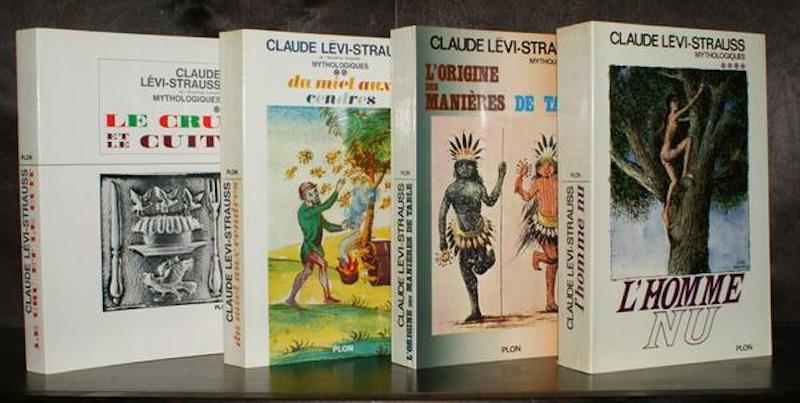
Mythologiques is a four-volume work of cultural anthropology by Claude Lévi-Strauss. Originally written in French, the works were translated into English by John Weightman and Doreen Weightman.
The four volumes of Mythologiques are:
1 The Raw and the Cooked (Le Cru et le cuit) - First published 1964. Translated in 1969
2 From Honey to Ashes (Du miel aux cendres) - First published in 1966. Translated in 1973
3 The Origin of Table Manners (L'Origine des manières de table) - First published in 1968. Translated in 1978
4 The Naked Man (L'Homme nu) - First published in 1971. Translated in 1981.
THE BRICOLEUR OF A NEW ANTHROPOLOGY
refusing to aknoewledge The Elephant in the Room
After the presentation by Dr.Erik Rodenborg I would like to pick up the remarkable circumstance he gets into in his conclusion, to add some of my own reflections of the theories and methodological inventions by Lévi-Strauss, as well as some of his critics and followers, without, as a layperson, making any pretentions on having an adequate answer to the question Rodenborg asks;
"...why they have grown so popular, although their empirical foundations are nearly non-existent and over and over again have been demolished by vicious critics"
The remarkable thing is namely, that although most of Lévi-Strauss academic colleagues, doubt the relevance of his theorising about kinship and the Origin of Society, as well as the validity and reability in his method of interpreting mythology and kinship structure accordiong to a supposed underlying unconscious pattern of cognitive cathegorising the perceived phenomena or inner imaginations into binary oppositions ( similar to the kind of pattern that the linguist Ferdinand de Saussure pursued structured our language) and rejected it already in the 70s, - although this, scholars in Sweden (scroll down!) still use his cognitive analysis model of binary oppositions, as the most ultimate one of structuring and interpreting art / mythology and religion as well.
With that in mind, I highly suspect that many of them also pursue the illusion that Lévi-Strauss theory about the Origin of Society ( The Elementary Structure of Kinship, 1949 / 1969) by exchanging women, is the latest and most reliable scientific data on this matter being produced during the last half of the 20th century. From where do they otherwise get their strong conviction about the universality of patriarchy and nonexistence of matriarchy? As already noted in the pages above in this thread, he is for sure not alone among the established academic scholars pursuing this idea, but as the American antropologist Sahlins as well as many others states, no-one has wielded such a great influence on modern anthropology and our modern worldview and look upon ourselves as human beings, art and religion as Lévi-Strauss.
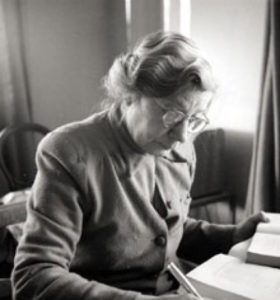
As the Swedish ecofeminist Elin Wägner attempt to explain with the help of this water-metaphor in her famous pamphlet Alarm Clock (Väckarklocka ) already 1941, we don´t know much about the origin of the knowledge we are taught about who we are as human beings and what our social origin look like, especially since their progenitors use very complicated methods to distill the water we are offered to drink.
Quoting Elin Wägner:
"The majority of people nowadays drink the water of lakes they have never seen. It has travelled a long way through pipes, It has ben altered through all the filters it has passed. The historical knowledge upon wich we build our destiny resembles such pipe water. Only a small number of specialists have access to the sources of history.
Science, naturally has to give a selected, simplified and understandable picture of what has happened. It can however be questioned if the selective methods now applied during this simplification is just, and if the explanations really explain what has happened.
The history that shapes our view is a synthetic product. Reality is broken down into its components and is then put together again, according to methods which are patented in the world of scholars. During that process some part of reality is scraped out as not relevant.
This is the reality that consists of women´s history
This means a pressure on women of such enormous amount, that it in itself is history-creating."
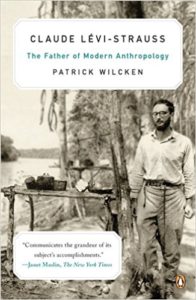
It is almost as if she had been equipped with the gift of predicting what was to come after her death 1949; with the arrival of the so called ”Father of Modern Anthropology" on the arena; Claude Levi Strauss; namely the complete conquest of a patriarchal worldview and bias in a reductionist science which omits women out of its narrative, (beyond making up the commodities with which men establish their alliances with one another). Because no-one before him, although God knows most of his predecessors tried their best; his much adored Rosseau included, and eventually in the 20th century inspired by natural science of how to split an atom, have succeeded in creating a more elaborate way of breaking down the phenomena into a pile of small scraps; for to be put together again according to a complete new system; namely the putative intrinsic law of man´s thinking in so called ”binary oppositions” - a system so ultimately complicated that it is impossible for no others than its instigator himself to navigate and evaluate.
THE HUMPTY DUMPTY PROCEDURE

No-one seems thus to better fit in to the description above by Wägner , than the so-called "bricoleur" himself; Claude Lévi-Strauss, his structural anthropology commented by the young Australian philosopher Dr. Timothy Laurie teaching at the Department of Gender and Cultural Studies att the University of Sydney as "the Humpty Dumpty-procedure" quoted here below.
Dr. Timothy Laurie is a Scholarly Teaching Fellow in the School of Communication. He completed his Bachelor of Media (Honours) and Bachelor of Social Science (Philosophy) at the University of Adelaide, before moving to the Department of Gender and Cultural Studies at the University of Sydney to complete his PhD, which focused on cultural theory, popular music, and the work of Gilles Deleuze. He subsequently took up a lectureship in Screen and Cultural Studies at the University of Melbourne, where he taught courses on the sociology of everyday life, cultural geography and popular culture (focusing on music and television). He is currently teaching material on critical theory, media studies, cultural diversity and popular culture, and co-authoring Masculinity After Deleuze (with Anna Hickey-Moody) for Bloomsbury.
Quoting Timothy Laurie:
"Faced with an excess of fieldwork observations in ‘exotic’ cultures, Lévi-Strauss’s own analytical method mirrors that of his own ‘bricoleur,’ taking ‘to pieces and reconstruct[ing] sets of events (on a physical, socio-historical or technical plane) and [using] them as so many indestructible pieces for structural patterns’.
Structural anthropology is a Humpty-Dumpty procedure: break things apart, taxonomise, then put back together as a set of relations, a social totality defined in terms of internal logical principles. For Lévi-Strauss, the unity of the ‘scattered fragments’ (Humpty-off-the-wall) with which the anthropologist deals is in the subjective consciousness of ‘primitive man [sic]’ himself, whose thought ‘is founded on [the] demand for order’."
Thus, whether Laurie is right or wrong in his critique, it seems worth noting that there are so many highly qualified academics and worldfamous intellectuals who share Camille Paglia´s as well as Luce Irigaray´s, and others ironic notions of Lévi-Strauss as one of the most overestimated men ever beheld, as well as others who seem to view him as indiscriminate and / or an opportunist whose intellecual honesty could be questuioned and whose work is of scanty scientific value - if any at all.
Timothy Laurie furthermore stresses the kind ofd double-bind communication used by Lévi-Strauss, which I also have found seems to have been diligent in use, probably to keep his critics to stay at arms length.
THE MISUNDERSTOOD GENIUS HIDING BEHIND THE USE OF AN INPENETRABLY COMPLICATED LANGUAGE?
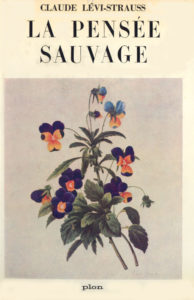
The pansies above may well suit the author of this famous book, with its heading alluding to the word "penser" in French that means "to think" in English La pensée savage, 1962 (transl. to English 1966 The Savage Mind ). In this book the author sets out to give an account of the way human beings think - or perhaps more accurately: of the way men think, whether they are savages or highly erudite and literate scholars as himself. If women are included in these speculations about human brainwork, are not known as the man never brings that up, only speaking about "men" and "the man" and "his" thinking and activities exchanging women among one another - as for example already is mentioned above by Erik Rodenborg ».
(In Sweden we dont have this linguistic problem, as the Swedish word for "man" =human being, is the gender neutral; "människa", which though still has got the female first person pronoun; "hon"=she, as is the same for "the sun" - "solen" also equipped with the female first person pronoun: "hon", most probably from earlier matriarchal prehistory times)
Not only in this regard though, whether his elaborate ideas about men´s thinking also comprise women´s, is this highly respected "Father of Modern Anthropology" somewhat hard to grasp, but just seems to wriggle out of ones grip as soon as one hopes to have got at least some notion about what the his angling for. And just as you could expect, one would inevitably be accused of having misunderstood his ideas by attempting to communicate them with himself or his followers.
To think is a hard work. And to write it down is even harder. But if you are a great genius whom people all around the world praise for being so damned good at finding out how people think, and is greatly rewarded therefore by an endless stream of gift giving of prizes and birthday congratulations as well as obituaries at ones death - the least one would expect from such an eminent person, is that he might know himself what he is talking about. As there seem to be very few of his readers and critics, not even among his own devoted admirers who aren´t accused of having misunderstood him, I eventually have become inclined to doubt that though.

That is anyway what the Swedish anthropologist Christer Lindberg is stating in his book: Samhället som tanke, Claude Levi -Strauss och den franska strukturalismen, 2009, (My transl: Society as conception, Claude Lévi-Strauss and the French Structuralism) and it makes me actually suspect that Lévi-Strauss know himself, that he didn't´t know himself what he was talking about. That´s why there are so many inverses, making it so impossible to get a grip on what he actually stood up for. And to me it sometimes even shines forth in his behaviour that it embarasses himself. Making his interview with Lévi-Strauss on his hundredth birthday Patrick Wilkens notice him revealing an inner life of emptiness, which he dosen´t even care to hide. To me he sometimes just seemed to have been bothered by all the fuss around his birthdays, well aware of him not being worth it.
Who knows - thus the greatest part of his life, he might have had to play a strenuous game pretending to be an impregnable genius, in order to get access to a wellpayed office of a prestigeos professors chair. I guess he would have rather preferred to get out of such an embarassing masquerade after his being retired, but instead he, almost as some kind of punishment, might have had to play the game for another 40 years.
The most interesting thing in this big drama event in the history of anthropology might not be the personality of the guru himself though, but his worldwide band of ardent supporters, whom one might suspect for not being more critical than the indiscriminate admirerer of the authors mentioned by the Canadian historian John Ralston Saul in his famous bestseller: The Unconscious Civilisation, 1999; Leo Strauss, Allan Bloom and Botho Strauss, expressing an elitist worldview with an inherit contempt for the "lower cathegory" to which most of their admirerers belonged themselves. Especially so the latter; Botho Strauss, by using a language of bookish High German incomprehensible to the majority of his readers, not at least to the many young right wing extremists who made up an ardent cheering section to him.

The Swedish idea historian Christina Schmidt, who has written a dissertation focusing not upon the structuralist but the critic of civilisation Claude Levi-Strauss; Nostalgisk längtan och iskallt förnuft: Claude Lévi-Strauss som civilisationskritiker 2009 (my transl: Nostalgic desire and ice - cold reason: Claude Levi-Strauss as a critic of civilisation) is another one of all these admirers claiming that Levi-Strauss has been harshly misunderstood, and lists some of the reasons for that, whereof one, according to her proposal, might be his conscious use of a language that "offers resistance" and requires a high level of education and culture by its readers, due to his attempt to protect his ideas from being vulgarized. ( To me quite the opposite conclusion would be logical though, that the better people understand - the less is left open for vulgarizing)
Although they both of them: Schmidt and Lindberg, seem to really treasure the work of Levi-Strauss and hold on to the idea that he to a great deal has been misinterpreted, you will soon, by comparing some of the their own statements, notice their interpretations differing quite a lot, not at least as for example regarding such a decisive issue as if Levi-Strauss offered a distinguished theory about the Origin of Society and the system of myths or not. Thus you are still left in great uncertainty of what interpretation should be considered as the right or erroneous one and not a misinterpretation.
In Christina Schmidt´s interpretation there is no doubt of Levi-Strauss´ reductionist ambition and claims to have found an overall scientific explanation to the Origin of Society and the fundamental impetus and functions of man´s cognitive processing. That´s anyway what I have found out from my maybe hasty reading. Although she is a woman herself she doesn't´t seem to have any objections of his notion of women as making up passive subduing commodities in men´s business - neither her mentioning the Elephant in the Room with one single word.
But Christer Lindberg, in his Samhället som tanke, referring to Lévi-Strauss´own statesments, quite the contrary argues that Levi-Strauss himself claimed not having invented anything beyond a model of interpretation, as for example at page 37: (My transl.):
"Structualism is is nothing but a comparive method which consists of merging separate phenomena into a greater whole, which becomes more and more universal by continued comparisation. What is special to structuralism is that it is impossible to distinguish form from content".
The last statement, in my opinion, strongly contradicting the first, as it thus doesn't seem possible to distinguish the model from its theoretical more or less biased basis.
And at page 66: (my transl.)
"Claude Lévi-Strauss never discovered the utopian way of living or ideal society during his expeditions, but the experiences from Caduveo, Bororo, Nambikwara and Tupi enabled him to construct a theoretical model of human society standing beyond empirical equivalent. Such a model - to Levi Strauss as well as once also to Rousseau - offers the possibility to distinguish what is autochthonous and what is artificial in the world of human beings. It is eternal and universal and opens up the possibilities for transformations."
As both of them, Levi-Strauss and Rousseau, by this method landed in the opinion of women as commodities to men, its quite easy to state that their "model" wasn't´t universal at all, but through and through ingrained by their own one-dimensional monochronistic biased worldview, with women transformed into zero (0 ) binary oppositions to the one (1) and only really human beings; men=1.
And this is among others what the reviewer Torgny Nordin in daily Svenska Dagbladet writes in his review of Christer Lindberg´s book about Levi Strauss: (My transl.)
"With his sometimes loftily refined texts featured by wordplays and all sorts of semantic tricks Lévi-Strauss is often surprisingly tricky and difficult to understand, certainly concerning his inextricable structural analyses, on which the great French anthropologist built his academic career.
The question is though if they could explain anything at all.
Lindberg doesn´t take a stand on this matter, though, but content himself with describing the foundation and pattern of the theory - but that, on the other hand, he does very good."
A statement that to me seems confusing as Lindberg, as well as Levi-Strauss himself, at least sometimes, urge his work just comprising a model of interpretation, i.e. a hermeneutic practice.
One might find it extraordinarily ingenuously though, the way the reviewer does it here; simply admits he doubts the King being dressed up in any sort of clothing at all.
Needless to say, it is really hard to understand how theories or models of interpretation who leaves people in such a mess of ambiguous and and contradictory interpretations could have had such an enormous success in a discipline of science, even with the scientific key signatures of claiming to make up The Grand Theory of it All, without severely inflicting its course and future survival by a great deal of contradictory confusion, which I hope will become visible in my further report on this page, but is yet much more distinct reviewed in Chris Knight´s work Blood relations.
EQUAL TO SAVAGES BUT NOT TO WOMEN?

As Erik Rodenborg already have stated in his review above, Levi-Strauss, was quite comprehensible in one sense though, namely in his claiming “the exchange of women” making up the impetus to The Origin of Society; the thesis presented in his most famous book: The Elementary Structure of Kinship from 1949. ( published for free on the net) and was as follows; For the culture to emerge, groups of men must start to exchange women between themselves. This development was initiated by the establishment of the incest taboo. That implied to Lévi-Strauss that the men, instead of keeping all the women to themselves, gave them away to other men.
The reason to this was, according to Levi-Strauss the “deep polygam tendencies, that´s prevailing in all men." (Lévi-Strauss 1969:38) which resulted in a constant scarcity of available women, never plenty enough. In addition the most desirable women always were in minority. (1969:38) By exchanging women with other groups the available women could increase.
On this issue it´s hard to understand Christer Lindberg´s standpoint, arguing its being a mistake to interpret his theory about The Origin of Society as a result of his own male sexist bias, as it, according to Lindberg, only is intended to make up a model, in which you tuck in your gathered data, just to test what will come out from it in the other end. (Circuitly so to say; why shoudn´t the same thing come out as you have put in?) Thus Lindberg contently states that Lévi-Strauss got the same result as he expected from the data he had put into his model.
This kind of reasoning is very a confusing to me. Could the analysis model really be distinguished from its fundamental theory, as well as from its instigators hermeneutic self reflections? The problem is discussed by Clifford Geertz in a paper I no longer can find: Theor Soc (2010) 39:651–688, 683:
"Thus, taking this separation between theories and models as a point of departure serves to underscore the renewed need to heed the original Levi-Straussian warnings (1963a, f, 1976b) to keep a clear line of distinction between structural models and sociological theories of action and even ontological “theories of structure” in the Giddens-Sewell sense. This leads to the rather counterintuitive conclusion that structuralism as a method and “the theory of structure” in a metatheoretical sense may sometimes be radically different (and sometimes antithetical) projects. Giddens proceeded by eliding the Levi-Straussian distinction between structural models and structural theories, thus collapsing the language used to talk about the former into a general (quasi)ontological formulation of the latter. This implicitly denies the partial autonomy of models from theories. Sewell (2005a, b) follows Giddens in this respect, fixing some conceptual muddles left behind by Giddens but keeping his structuralist analysis at a purely ontological level.
As a result of this, most researchers who engage in informal uses of “theories of structure” in contemporary sociological research are seldom careful enough to distinguish the self-conscious practical deployment of structural models as representational tools for the construction of analytic objects from general ontological pronouncements regarding structure in the Giddens-Sewell lineage, or either of the latter from empirical observations that may be brought to order by way of structural representations."
But quite honestly I don´t understand much of that and its really beyond my perception to figure out in what way this model might be used in a gender neutral way as its built on the a priori of men´s inherit polygamic nature and the scarcity of women in relation to their supposed immense sexual needs. I simply must admit I don´t follow this reasoning, and that, for sure, doesn´t either the worldfamous feminist philosopher; Luce Irigaray, who has written a wellknown caustic remark on the matter in her blog: Women on the Market. Neither the science philosopher and matriarchy theorist Heide Göttner-Abendroth seems to doubt the consistency of Lévi-Strauss´ fundamental notion its being male - and not female - instincts that once made up the impeteus to the Origin of Society by men exchanging women, thus presupposing an inherit willingness in women to subdue to male dominance which is extremely fraudulent, as it has no substance in relation to historical facts shown by Briffault et others, not at least in his extential work of three volumes; The Mothers, 1927, of which I will make a report on the page: Distorted forgotten and hidden facts
VOTING AGAINST MARGUREITE YOURCENAR BEING ELECTED INTO THE FRENCH ACADEMY 1980

Thus it looks like there are no reason to doubt the sustainability of Lévi-Strauss´ misogyni, or at least his more or less overall conservative stance in the matters of women´s active participation in the male things, and or at least his totally lack of interest of female involvement, as he when Marguerite Yourcenar 1980 was elected the very first female member of the Académie française, an institution renowned for its dominance of male members only, was one of them who voted against that on the grounds that an institution which had excluded women for three centuries should not precipitately alter its ways. This attitude becomes also quite clear from what is informed of his first marriage to the ethnologist Dina Dreyfys on Wikipedia:
THE AMATEUR OMITTING HIS PROFESSIONAL WIFE DINA´S CONTRIBUTION TO HIS CAREER AS AN ANTHROPOLOGIST
Quoting Wikipedia:

"Dina Levi-Strauss, whose girls nickname was Dreyfys, was a French ethnologist, anthropologist, sociologist, and philosopher, who conducted cultural research in South America, taught at the University of São Paulo in Brazil, and founded the first ethnological society in the country.
In 1932 she married Claude Lévi-Strauss, who developed his interest in ethnology while working with his wife. In 1935 she joined the French cultural mission to lecture at the newly founded University of São Paulo. She taught a course on practical ethnology that attracted a large audience from the town's educated, French-speaking society. She also founded Brazil's first ethnological society with Mario de Andrade.
In 1936-38 she undertook field research with her husband in Mato Grosso and Rondônia in the Amazon Rainforest, studying the cultures of the Guaycuru and Bororo Indian tribes.
Artifacts collected during the Mato Grosso expedition first were exhibited in Paris at the Musée de l'Homme during 1937. The title of the exhibition, Indiens du Mato-Grosso (Mission Claude et Dina Lévi-Strauss), recognized the contributions of both scientists.
During the last and longest expedition to the Nambikwara she contracted an eye infection that forced her return to São Paulo, from which she then returned to France. Her husband remained and concluded the expedition. They later divorced.
In the following decades, her influence upon her husband and her contribution to their joint expeditions fell largely into oblivion when her role was ignored in the writings of her former husband that became so important to the field of anthropology. When Claude Lévi-Strauss described his Brazilian experience in his 1955 classic, Tristes Tropiques, he mentioned his former wife only once, noting the moment when she had to separate from the last expedition.
Dina Lévi-Strauss returned to France in 1938. The couple Lévi-Strauss separated in 1939, and divorced at the latest in 1945, when Claude Lévi-Strauss remarried. Dina took back her maiden name Dreyfus.
She later worked as a philosophy teacher in a Lycée, in university preparation classes, and in university, and she became an inspecteur général in the French education system. In the 1950s, she published articles on Bernanos and Simone Weil; in the 1960s, she translated Hume and Freud.
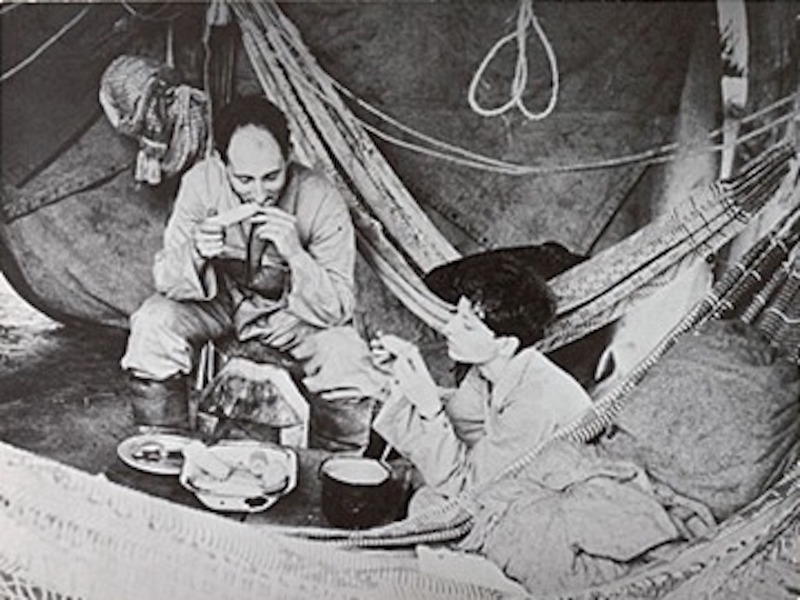
QUOTING WIKIPEDIA ABOUT CLAUDE LÈVI-STRAUSS´ BIOGRAPHICAL DATA
"Claude Lévi-Strauss was born to French Jewish parents who were living in Brussels at the time, where his father was working as a portrait painter. He grew up in Paris, living on a street of the upscale 16th arrondissement named after the artist Claude Lorrain, whose work he admired and later wrote about.During the First World War, he lived with his maternal grandfather, who was the rabbi of the synagogue of Versailles. He attended the Lycée Janson de Sailly and the Lycée Condorcet.
At the Sorbonne in Paris, Lévi-Strauss studied law and philosophy. He did not pursue his study of law, but passed the agrégation in philosophy in 1931. In 1935, after a few years of secondary-school teaching, he took up a last-minute offer to be part of a French cultural mission to Brazil in which he would serve as a visiting professor of sociology at the University of São Paulo while his then wife, Dina, served as a visiting professor of ethnology.
The couple lived and did their anthropological work in Brazil from 1935 to 1939. During this time, while he was a visiting professor of sociology, Claude undertook his only ethnographic fieldwork. He accompanied Dina, a trained ethnographer in her own right, who was also a visiting professor at the University of São Paulo, where they conducted research forays into the Mato Grosso and the Amazon Rainforest. They first studied the Guaycuru and Bororó Indian tribes, staying among them for a few days.
In 1938, they returned for a second, more than half-year-long expedition to study the Nambikwara and Tupi-Kawahib societies. At this time, his wife suffered an eye infection that prevented her from completing the study, which he concluded. This experience cemented Lévi-Strauss's professional identity as an anthropologist. Edmund Leach suggests, from Lévi-Strauss's own accounts in Tristes Tropiques, that he could not have spent more than a few weeks in any one place and was never able to converse easily with any of his native informants in their native language, which is uncharacteristic of anthropological research methods of participatory interaction with subjects to gain a full understanding of a culture.

A radical lefties or a backward opportunist?
FEMINIST CRITICS OF THE MALE STREAM BIAS AMONG THE ESTABLISHED SCHOLARS
The good thing with s.c. "matriarchalists" such as as for example Elin Wägner and Heide Göttner-Abendroth is that you don´t have to worry about them not knowing what they are talking about, as they are able to explain it in a way that makes it possible even for a layperson to understand. (And in Sweden we have had both Eva Moberg and Elisabeth Hermodsson who took up Elin Wägners science critic, but nowadays unfortunately both of them are out of the game, the former died far too young 2011 and the latter is over 90 years old, no-one among the Third Wavers following their highly qualified and proud tradition.)

The science journalist Eva Moberg and daughter of the famous author; Wilhelm Moberg
Now there are of course some very complicated things in science that requires quite a lot of hard brainwork to comprise even for a professional. But even these things could to some extent be explained to an interested and ambitious layperson if s/he is more or less familiar with the topic. Anyway I am quite convinced thereof and will therefore try myself to demonstrate how, by referring Lévi-Strauss´ cerebral ideas to contemporary research in the field of complex structures according to systems theory.
Elin Wägner as well Heide Göttner Abendroth have both of them directed devastating critique towards the established academics pursuing a "science" in which women are more or less consciously and deliberately omitted as if they actually didn't´t exist.

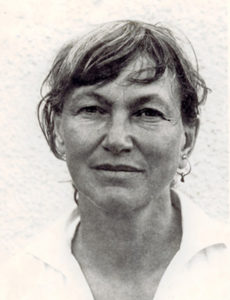
Thus for women to drive research must inevitably comprise a great deal of criticism of the kind of history made up by male stream academics who more or less consciously has distorted the truth, wich is extremely tiring, as it takes a hell lot of time and energy into account to gnaw oneself through huge piles of texts, consisting of mere nonsence, of which much seems so constructedly farfetched that even a child might see through it as made up stories, due to its lack of basic logic as well as comprehensible coherences.
Wägner, inspired by Mathilde Vaerting´s ideas; (with great discretion though as some of them really weren´t tenable, which is commented by Heide Göttner Abendroth in her Das Matriarchat I Geshichte seiner Erforshung), from already the beginning of the past century, describes the phenomenon as the “The struggle against the historical traces of women´s dominance”, which quite obviously appears to be an accepted part of the established academic discipline.
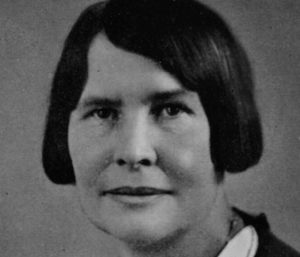
Vaerting gives many examples of the allegations against the discipline of history with numerous examples of the falsification of sources, manipulated translations, springing from male bias. Facts are confused, misinterpreted, anhiliated and silenced etc. etc.
They also point at the fact that male bias seems to be loaden with some kind of avenge against women and the female, which among others take the shape of making themselves to the bearer of life; either by bearing women out of their ribs as for example Adam did with Eve, or out of their head, as Zeus did with Athena, complemented by Chris Knights theory about women´s initial sex strike, eventually taken over by the men themselves.
Not to mention their final triumphant success in modern technology by soon being able to bear children out of artificial uteruses, commented by Elisabet Hermodsson in her book Där världen blir till, 2002 (My transl.: Where the World Emerges)

You might perhaps also draw the conclusion that one of the surge stemming from the well of Lévi-Strauss´ quasi-radical theorising, makes up the water the 70´s hippies in USA might have consumed; especially if one might trust the report made by Valerie Solanas in her SCUM-Manifesto 1996, hilariously expressed in this passage:
Quoting Solanas on p. 15-16
”The hippie babbles on about individuality, but has no more conception off it than any other man. He desires to get back to nature, back to the wilderness, back to the home of the fur animals that he´s one of, away from the city, where there is at least a trace, a bare beginning of civilisation, to live at the species level, his time taken up with simple no-intellectual activities - farming, fucking, bead stringing. The most important activity of the commune, the one on which it is based, is gang-banging. The ”hippie” is centred to the commune mainly by the prospect of all the free pussy - the main commodity to be shared, to be had just for the asking but, blinded by greed, he fails to anticipate all the other men he has to share with, or the jealousies and possessiveness of the pussies themselves”
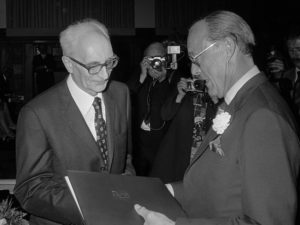
Fisch or fowl - amateur or professional?
Now all of these brave men, who like Lévi-Strauss, the Hero and Chieftain number one, set out in the wilderness to look for savages, have a great problem when it comes to the women-matter, as most of the savages they encounter didn't´t or don´t share their own view upon women as convenient commodities only. So what to do then, not to loose ones face in front of the other so called "civilised" colleagues out on the hunt? Especially as it must cost themselves a great deal of confusion whether they should classify their own women as savages or not.
I guess all of you already have got the hook and know exactly what I am getting at, and therefore I actually wouldn´t have to keep on hassling on this topic, if it just weren´t for the fact that I have discovered that the ideas of Lévi Strauss still are alive and well, and comprise the theoretical - analytic basis of many of the academic´s reasoning in Sweden. Some of them seemingly not even knowing it themselves thus confirming the relevance of what Elin Wägner wrote in her Väckarklocka 1941 quoted above about the distilled water we are offered to drink but don´t from what duells it has its origin.
THE BACK-WASH FROM THE WELL OF LÉVI-STRAUSS´ "SCIENTIFICAL" FINDINGS:

One flagrant example of the latter I happened to overhear in a broadcasted discussion with the heading Out on the Hunt After the First War , about the universality of human warfare, the Swedish archaeologist Jonathan Lindström argues that in remote paleolithic times, when hunter-and gatherers lived more widespread from one another, they made up stratifying cathegories to identify themselves by classifying “we; the human beings” in binary opposition to “them; the others” i. e the animals. This conclusion he seems to draw from the simple fact that people by then never pictured human beings in their rock- and cave-art. Not until later in the bronze age, he argues, people started to picture other human beings, whereby the animals lost their position as ”the others” for to instead act as their draught animals etc. After being more frequently exposed to other groups of people in the bronze-age there wasn't any longer the need of marking themselves off against the animals, in order to create group identity and cohesiveness, he suggests, as they from then on had the opportunity to use other groups of peoples for that purpose, instead of animals, as if it was an inherit given that people might not be able to distinguish themselves from other cathegories, without stratifying the "others" to be inferior to themselves and that the ritual expressions in their carve- and rock-art surve this purpose.
THE ELC IN THE ROOM...
Although Lindström supposedly isn´t aware of it himself, I strongly suspect that this kind of spectacular, primitive and unlogic reasoning, has got its fundamental dwell in the theories and models by Lévi-Strauss. A suspicion that is certified by the Swedish archeologist Helena Günther, in her paper dealing with hunting-themed rock art from the Stone Age in North: Älgkon i nordisk hällbildsforskning - en förbigången historia (My transl.: "The Cow Elk in Nordic Research about Rock Art, an Ignored Issue") by her, referring to the influence of the British archaeologist Christopher Tilley´s fatally misleading work: Material Culture and Texts - The Art off Ambiguity 1991, on the Swedish archaeologist discussion about the interpretation of the rock art in northern Sweden and especially in Näsåker, bearing a doubtless witness of Levi-Strauss bricolage approach to the subject and its method of looking for binary oppositions, even when there are no such.

Lamenting the lack of a deeper understanding of the phenomenon "shamanism" among her colleagues; as on the one hand a rather practical / economical issue dealing with "trivial" every day´s needs, as for example the products the cow elks deliver such as milk, fur and meat, as well as like all females - reproducing life itself, and on the other hand as an expression and tradition connected to the way hunter and gatherer of the northern Fennoscandian type she studies, practice their "religious believes" and rites inherit and integrated in every day life´s occupation, (in this repeating much of exactly the same kind of critics, delivered by Heide Göttner Abendroth et al among the modern matriarchal scholars) writing:
"Unfortunately this has led to a destructive dichotomy between religion and subsistence, sacred and profane, and, particularly misleadinging the case of rockart–animal, and human as object and subject, respectively. The anthropological record shows that these are not valid oppositions. An ethnocentric attitude towards animals is an obstacle to further knowledge of the meanings of rock art.
In the case of the elk, only few are depicted with antlers, and are therefore most likely females. This is very rarely considered. Few scholars interested in prehistoric ontologies and world view deal with animals as being of any importance except as abstractions and symbols.
The elk's body is treated as belonging to the economic sphere,
which alas is treated as separate from religious life. Religion is erroneously presumed to be a task solely for the shaman, and something that takes place beyond the mundane space of daily life.
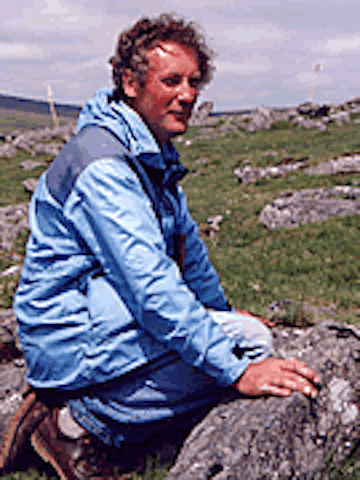
From initially haven given a short account of Lévi-Strauss´ "bricolage" theorising and methods Christopher Tilley continues arguing that the almost universal absence of antlers of the depicted elks depicted, signify a female principle (p. 68) This observation he continues may be taken further to suggest that elk: boat :: female: male
Quoting Tilley; Material Culture; The Art of Ambiguity 1991
"The most frequent designs are the elk and the boat and we might profitably begin the investigation by looking more closely at the relations between these two design classes.
PRINCIPLES LINKING ELKS AND BOATS
I have argued that that in the almost universal absence of antlers the elks depicted signify a female principle (p.68) This observation may be taken further by suggesting that elk: boat:: female : male, or elk is to boat as female is to man. The elk and the boat are connotative signs and represent female and male respectively. This is part of their meaning and human society is being portrayed as in part dependant for its reproduction on this opposition.
Although there are good grounds for the argument that elks do in fact signify a female principle, we need to investigate what basis there is for suggesting that boats represent a corresponding male principle. First there are transformational relations of similarity in boat and el depictions. Second there are definite regularities in spatial patterning and arrgengements and cases of boat-elk conjunctions. These can be considered in more detail.
Although the idea historian Christina Schmidt in her dissertation about Levi Strauss over and over claims he has been misinterpreted as a formalist interested only in the structure and not in the content of the myths and that the actual ambition with his research has been to attain unity and reciprocity between man and nature, it seems thus like the result of his influence on science has been quite the opposite though, whether due to misinterpretation or not.
The very strange thing in Lindströms carriage is, that although he in one of his books De dödas tempel, (my transl: The Temple of the dead), in which he gives a report of his excavation of the well-preserved remains of a unique mortuary house full of finds from about 2400 cal BC; very late Corded Ware or Battle Axe Culture, he highly recommend the Swedish archaeologist and specialist on rock-art from the Stone Age in North Fennoscandia; Helena Günther, who firmly opposes the dichotomous view upon culture vs nature, supposedly originally stemming from Claude Lévi-Strauss - still continues to cling to the same ideas as well as to the farfetched whim by David Lewis-Williams, also dismissed by her, about the shamans experiencing so called "entopic" phenomena in trance, thereafter depicting them in cave- or rock-art in for example in zig-zag pattern, dots or lines, which might reveal some of the difficulties it might comprise to some attempting to get rid of their male bias - recommending one thing - still thinking and pursuing the quite opposite.
LE ROIL SOLEIL ECLIPSING THE DISCIPLINE OF ANTHROPOLOGY ITSELF?
It seems as if everything converge in a lens made up by the work and life of Lévi-Strauss and his many critics and admirers - in that sence the American anthropologist Marshal Sahlins - one of his most dedicated supporters; seems to be perfectly on the spot when stating the influence of him being much stronger than most of us are aware of, in his article in the American Anthropological Association "On the anthropology of Levi-Strauss" 2009.
Thus the question is what kind of influence that might be - good or bad or just resulting in a hell lot of time wasted on a glass bead game nobody really knows what it is about. And above all: Why just him being so overwhelmingly tributed in comparison with other scholars of the same and or even more qualified calibre, as for example Robert Briffault who had a lot in common with Lévi-Strauss, but instead was totally eclipsed by the latter, his findings omitted from the educational reference lists in the discipline of anthropology as well as from the Encyclopaedia Britannica - a fate he shares with the most eminent archaelogist of the 20th century; Marija Gimbutas.
Another statement of interest to my investigation is the one Sahlins makes in his review; namely that there are no followers to Levi-Strauss - which I have noticed too - that his most important contribution to the discipline of anthropology seems to have been to put an end to it, for instead to be replaced by his own kind of highly speculative "cognitive science" and / or invention of a new kind of simplifying interpretation of art / myth and religion, for people who are too lazy to challenge their brainwork with the more complicated method of holistic multidimensional hermeneutic interpretation, represented for example by Ricoeur, which always by the real professionals in the field, has been regarded as the most adequate and well elaborate method of interpreting art / myth and religion, as well as reflecting the unconscious mind in psychoanalysis.
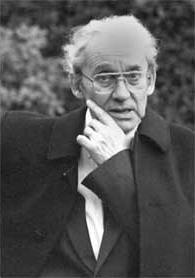
Paul Ricoeur
"Paul Ricoeur was among the most impressive philosophers of the 20th century continental philosophers, both in the unusual breadth and depth of his philosophical scholarship and in the innovative nature of his thought. His work is essentially concerned with the grand theme of philosophy: the meaning of life, his "tensive" style focusing on the tensions running through the very structure of human being. His constant preoccupation was with a hermeneutic of the self, fundamental to which is the need we have for our lives to be made intelligible to us. Ricoeur's flagship in this endeavor is his narrative theory. Though a Christian philosopher whose work in theology is well-known and respected, his philosophical writings do not rely upon theological concepts, and are appreciated by non-Christians and Christians alike. His most widely read works are The Rule of Metaphor, From Text to Action, and Oneself As Another, and the three volumes of Time and Narrative. His other significant books include Hermeneutics and the Human Sciences, Conflict of Interpretations, The Symbolism of Evil, Freud and Philosophy, and Freedom and Nature: The Voluntary and the Involuntary."
Quoting Sahlins once more:
"More than any other science or discipline, Anthropology became the self-consciousness of the human species in all its varieties and all its similarities. There developed a line of global thinkers of human cultures—E.B. Tylor, Lewis Henry Morgan, Franz Boas, Emile Durkheim, Marcel Mauss, A.R. Radcliffe-Brown, Bronislaw Malinowski—of whom, alas, it seems that Levi-Strauss is the last."
Furthermore it´s interesting to notice that neither Sahlins seems to be interested in the involvment of women among this illustrious club of male anthropologists during the 20th century, and naturally he dosen´either mention the great Robert Briffault as he challenged the male stream dogma they represented. Besides, he was anyhow just an "amateur".
USING IRONY AND MASTER SUPPRESION TECHNIQUES INSTEAD OF STRICT SCIENTIFIC APPROACHES IS A PRIVILEGE RESERVED FOR THE "PROFESSIONALS" ONLY.
In a paper with the heading: Clifford Geertz: Ethnography and the Ironic Mood, 2011, Cameron Yelley, at West Chester University make remarks on his fellow college the anthropologist Clifford Geertz for not proceeding with the desired style of ethnohgraph writing, because his use of ironic rather than the kind of "pragmatic scientism" he seems to consider being the normal standards among his colleges.
Quoting Yelley:
"Anthropology as an academic discipline has come a long way from its inception as an unwitting appendage of colonial subjugation, and as such the use of “savage” in anthropological discourse has evolved. Thanks to the work of Claude Levi Strauss the study of the behaviourrs and institutions of native people acriss the world has matured from a debate about “the particularlar minds of particular savages” to one of the universal Savage Mind that inherently exists in all mankind (Geertz 1973:335)
"Where ethnographic writing once prided itself on pragmaticc scientism, the current trend is an appeal to literary style and bringing cultural competence to a wider audience. While superficiallly Gertz seems to support the reductionist approach of prior to anthropologists, it is his ironic tone that forces the reader to question validity of such arguments and search for its deeper meaning."
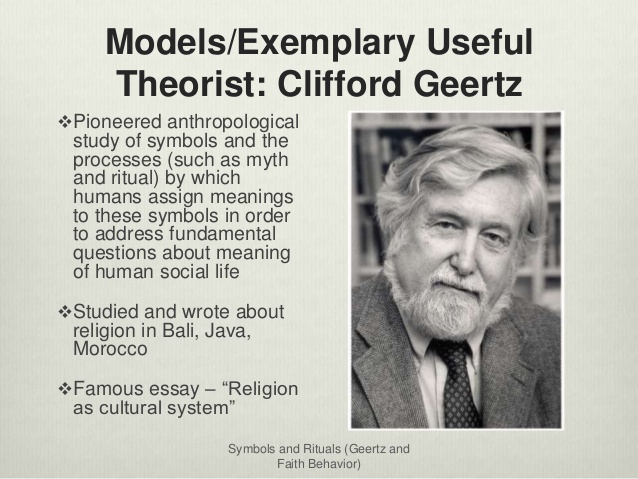
I am not sure if I can agree with mr Yelley about that, though.
You just have to take a quick look in the history of ethnography / anthropology / archaeology from the s.c "mathriarchalists" view, for to state the complete binary opposition to that, some of wich is notified on the first page under this heading; Male Stream Science: not at least in the article of Charlene Spretnak about the unbelievably degrading maltreatment of Gimbutas whereby the anthropologist Cyntia Eller et al use a derogatory adressing you never imagined as accepted by serious academics, as well as Die Discriminierung der Matriarchatsforschung; Eine moderne Hexenjagd, by Heide Göttner Abendroth:
And here is another protruding example that speaks for itself;

A review of Robert Briffault´s three volume extensive work The mothers, 1927 published in American Anthropologist nr 31 1929, in which "the amateur" gets duly ticked up by the author for not observing appropriate respect for the discipline of anthropology, referring to the famous anthropologist Robert Lowie who was one of Lévi-Strauss most influential referents, stating in his book Primitive Society:
"...that there was not a single theoretical problem on which modern anthropologists are so thoroughly in accord as that concerning the former and present non-existence of a “matriarchate.”
And then he continues:
"If this statement holds true, and I have no doubt that it does, then the present volumes of Mr. Briffault do not tend to place him in the ranks of modern anthropologists. Mr. Briffault, in a manner similar to that of his precursors, came upon the idea of a former matriarchate as a convenient tool on which to hinge the idea of social evolution.
The concept was, of course, assumed not only a priori, but even in contradiction to all known ethnographic facts. The author, in the quiet of his study, modestly proposed “to draw up a list of the forms of the social instincts, and to investigate their origin.” Having progressed in his investigation to this extent, he discovered, to his surprise, that the social characters of the human mind are, one and all, traceable to the operation of instincts that are related to the functions of the female and not to those of the male.
Hence the necessity of a primordial matriarchate. In spite of the somewhat peculiar premises upon which the present work rests, the contents arc often of interest and value. Mr. Briffault brings even more erudition to his subject than did Westermarck. He broaches topics which are important and somewhat new to anthropology, such as the evolution of our present relations between the sexes. From the point of readability the work is marred by the inexhaustible list of examples, from the point of science by innumerable dogmatic generalizations. The third volume, which deals mainly with the social conditions and literature of medieval Europe, is by far the best of the three."
CONCLUSION:
MALE STREAM= proffesionals
MATRIARCHALISTS= amateurs
And that´s how it continues in the same ironic and derogatory style from the beginning to the end claiming that the more or less fascist- anthropologists ?? and Sumner already would have proven that the Origin of Society
Read the continuation of the article here »
Not only is this tendency of ironic in diligent use, but even much worse; also shere bullying and witch-hunt are common tools to get rid of the commodities not to interfere in the Big Business By Men For Men About Men which is shown in the anthology Die Discriminierung der Matriarchatsforschung, by Heide Göttner-Abendroth. And apart from the humiliating treatment of Marija Gimbutas, another example is the unparalleled degradation of the Swedish ecofeminist and writer Elin Wägner (Swedens Virginia Wolf) was exposed to after her dead when the Swedishh Nobel-prizewinner and Harry Martinsson, who nourished a great interest in science, took over her chair nr 15 in the Swedish Academy.
Furthermore there are also male anthropoplogists complaining about a defaulted dialogue among their fellow colleges, substituted by a harsh and cynic fight for dominance and there prestige instead of a serious scientific approach. Thus it seems like the discipline of anthropology in the long run, more or less is digging their own grave, as long as it doesn´t open up for the women to take part in the narrative.
ANTHROPOLOGY FOR THE SAVAGES = HISTORY FOR THE WESTERNERS
The deeper I dig into the kind of "modern" anthropology that has been parented by its Great Granddaddy Lévi-Strauss, as well as most of his fellow colleges ( except for s.c matriarchalists who never looked upon women rule as "savages"), I realise the relevance of the matriarchal and Nigerian born sociologist Ifi Amadiume´s objections to the colonial attitude inherit therein, by noting that the term has been used to delineate the history of "the others". The Westernes themselves delineate their own past as "history" - not anthropology.

The underlying patriarchal and colonial bias becomes embarassingly obvious if you turn the behavorial pantern upside down and imagine yourself black african women coming here just to examine white mens savage thinking about women as commodities, placing themselves somewhere in their homes or at their jobs with a paper and pen alert to note every step and move they take. Then going home to write down abstract and farfetched theories about the underlying structures to and / or motives of thinking and behaving like they do.
Thus it is no wonder that the indigenous "savages" nowadays prefer to pursue their own "anthropologist" research about their own cultures, as is the case with many of the women and even some men visiting the World Congresses on Modern Matriarchal Studies initiated and directed by Heide Göttner-Abendroth.
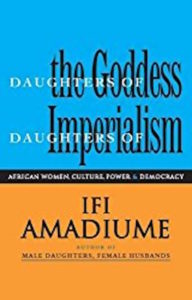
According to a Swedish antropologist I heard being interviewed the other day, the discipline is nowadays threatened by its marginalisation to the Western countries only, which he regrets considering the fact that it has got some advantages to make field research among cultures you are not familiar to, as it makes you see things different as those who are used to it and take them for granted.
The most optimal salvage solution to this would then perhaps be to take up the initiativ made by Heide Göttner-Abendroth and carry out an exchange of anthropogical studies of different cultures, and learning from one another different views. Not at least from the matriarchal cultures still existing around the globe how to make up the survival of the most fitted - as they obviously are as the only ones who have suceeded to bring forth their ageold form of systems up until today, in spite of the eternal threat of being colonially and / or culturally superseded by the surrounding expanding patriarchal societies
THE BREAKTHROUGH: TRISTES TROPIQUE - THE EXPEDITION INTO AMAZONAS COMPRISING SCANTY FIELD WORK
Consequently the path seems to have been well charted for opportunists looking for comfortable advancements. And this is where the disastrous entrance of Levi-Strauss into the arena of anthropology occurs, who took it back to what it was before the pioneers in the 19th century; Johan Jacob Bachofen and Lewis Henry Morgan et al, who paved its foundation, the latter being accused by Levi-Strauss of having mislead anthropology with incorrect data about the kinship systems of the Iroqois clans in North America. It is quite incomprehensible to me, how he could have had any objectivities on that matter at all, especially as his own data seems more than insufficient if not completely false, regarding the matrilineally and matrilocal customs of the different tribes he met, and described as patriarchal and exchanging women irrespectively of facts. This obvious insufficiencies as well as others others in the work of Levi-Strauss are exemplarily sorted out and commented by Susan M .Voss. (Cited further down under the heading "THE MODE OF SCIENCE")
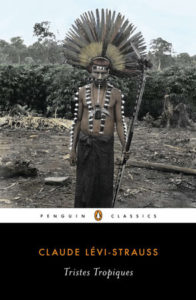
The many supporters of Lévi-Strauss lauding his highly developed sense of poetry and aesthetics, made me really confused, as I had come over some papers about his many diversions into the field of music in order to seek parallels from therein to his theories about the way man perceive and structure units of myths; mythemes into binary oppositions and mirroring the totem institutions of society, by an interpretation of a Fugue of Bach, amazingly butterfingered and primitive, comparing the second melody coming in some bars after the other, with a hostile tribe hunting the other, that this passage of Clifford Gertz´s critical review of Lévi-Strauss theorising: “The cerebral Savage” springs to my mind:
"Some of these essays in "socio-logic" (in his books Tristes tropique and La pensée sauvage ) are, like the analysis of totemism, persuasive and enlightening as far as they go. (Inasmuch as any metaphysical content or affective aura these beliefs may have is vigorously excluded from attention, this is not really so very far.) Others, like the attempt to show that totemism and caste are capable ("by means of a very simple transformation") of being reduced to variant expressions of the same general underlying structure are at least intriguing if not precisely convincing. And others, like the attempts to show that the different ways in which horses, dogs, birds, and cattle are named form a coherent three-dimensional system of complementary images cross-cut by relations of inverted symmetry, are triumphs of self-parody. They are exercises in "depth interpretation" farfetched enough to make even a psychoanalyst blush. It is all terribly ingenious. If a model of society which is "eternal and universal" can be built up out of the debris of dead and dying societies--a model which reflects neither time, nor place, nor circumstance but (this from Totemism) "a direct expression of the structure of the mind (and behind the mind, probably of the brain)"--then this may well be the way to build it."
After this ludicrously farfetched interpretation of the Bach fugue I couldn't´t believe the rumours of his extraordinary sensitivity being true, thus having to borrow his first bestseller and one of the most famous books during the 20th century in Europe and USA: Tristes Tropique, just to take a look for myself what it all is about. And yes; It is a good book, regarded as the travelogue it is, but not that good, as already stated by Clifford Gertz in his article "The Cerebral Savage"
Anyway, beyond the endless series of prices tributed to The Great, the jury of the Prix Goncourt, France’s most famous literary award, said that it would have given the prize to Tristes Tropiques, his hybrid of memoir and anthropological travelogue, had it been fiction.
But beyond the mere literary qualities I didn't notice anything of tenable scientific value in Tristes Tropique. Thus there shouldn't have been any impediments for the jury of the Prix Goncourt to deliver the prize they so much longed for to heap over the Great Genius.
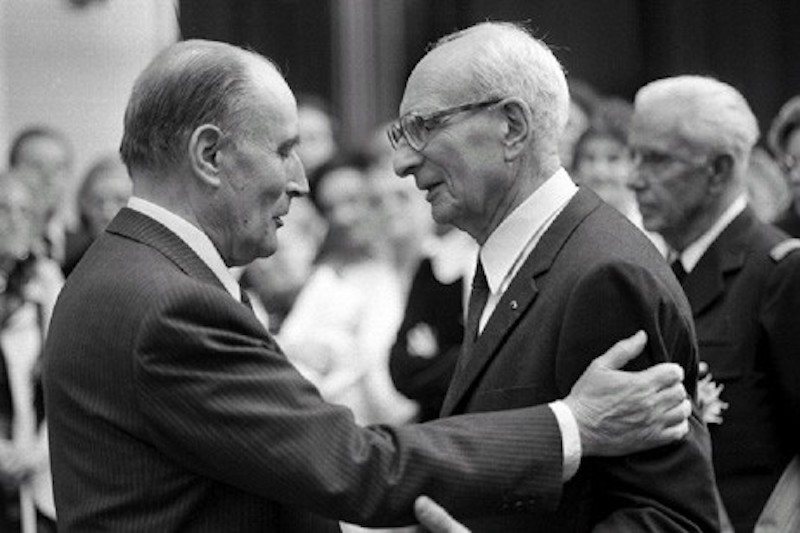
Awarding the Hero Chieftain of the included "professionals"; men exchanging their tributes
THE MODEST AND HUMBLE FACADE - THE BINARY OPPOSITION TO THE PRETENSIOUS CLAIMS ON BEHALF OF THE COLLEGES AND PREDECESSORS IN THE DISCIPLINE OF ANTHROPOLOGY
According to Christina Schmidt in her work on Lévi-Strauss p. 79 - 84, as well as many others of his admirers the behaviour of him is supposed to have been very modest and humble, but I don´t get how that notion goes together with his obviously arrogant attitude to the work of his colleagues and his ignorance of their critics of his own.
Although the obvious weakness and insufficiency of his own field work, (scroll down to Voss!) Levi-Strauss didn´t hesitate to criticise the field work of others, not at least the one of Lewis Henry Morgan, as well as he did with Malinowski´s and others. And what´s more, he also rejected all of his predecessors methods as inadequate, claiming his own instead warranting strict scientific objectivity.
Christer Lindberg comments this carriage by Lévi-Strauss´ trying to mask the fact that his main ideas already were developed by Levi Bruhl, by totally ignoring him, omitting him as one of his most important references. A behaviour that reminds of the comments Campell has made about Freud, quoted in Richard Tarnas famous idea historian work; The Passion of the Western Mind: "As Joseph Cambell used to say, Freud was fishing while sitting on a whale - he didn´t realise what he had before him" although of perhaps different reasons; the former quite consciously, and the latter, from not being erudite enough to realise on whose shoulders he was standing.
The father of the more longtime established anthropology since the 19th century as the first pioneer out on the field, who normally Lewis Henry Morgan is considered to be, and whose findings about matrilineal kinship systems among the Iroquois Indians in North America, were used by Friedrich Engels in his theorising about the egalitarian matriarchal so-called "primordial" or "primitive" communism. According to Christer Lindberg Lévi-Strauss took up many of Morgans ideas, but obviously rejected or just ignored his notions about the Iroquis women choosing their men on their own and having them to move home to themselves. Lindberg states that Franz Boas and Lévi-Strauss argued that Morgan´s field work documentation about kinship suffered from some kind of weaknesses, but doesn´t distinguish what kind of weakness it would be. To me its not comprehensible how they could have known better, what really was going on among the Iroquis during the time Morgan did his fieldwork, although its being more than half a century before Boas took up his field work among the North American Indians, and Lévi-Strauss not before a whole century later on.
Therefore I am more inclined to believe its relevance when Heide Göttner-Abendroth as well as Chris Knight argue that the turn the anthropologists were taking in the 20th century was basically ideological, defending the institutions of the patriarchal monogamous family and the capitalist hierarchical state, forged by competition among the "most fitted", according to a very narrowminded biased interpretation of Darwin´s theory of evolution.
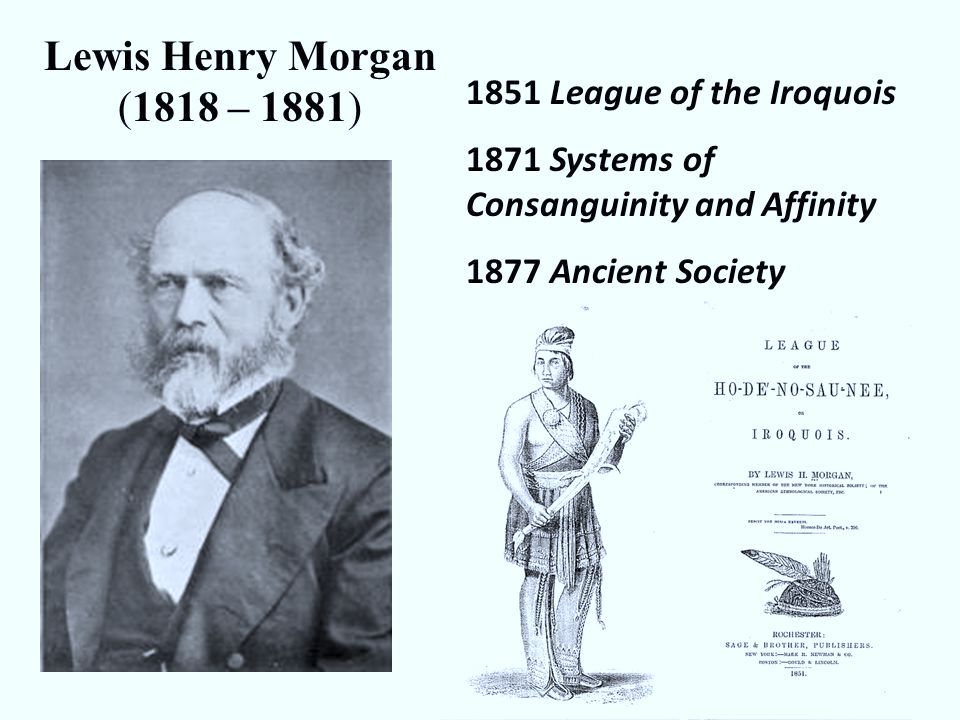
THE "FATHER OF MODERN ANTHROPOLOGY" TAKING IT 150 YEARS BACKWARDS IN TIME
The description Heide-Göttner Abendroth offers in the first chapter of her educational work; Matriarchal Societies. Studies on Indigenous Cultures across the Globe (Peter Lang, New York/USA, March 2012)
of the history of research of matriarchy since the 18th century as...
"... not so much a story as it is a series of starts and stops whose repeated "beginnings" keep disappearing into shadow of history. The thread of this history keps breaking off, piecers of the narrativa seem to go nowhere, lines of arguments are not followed up - or are in Western science, eliminated completely."
... could as well be the similar for the discipline of antropology itself. Göttner-Abendroth continues therafter in giving a brief report of the history of this research carried out in several different branches:, which I highly recommend as fundamental for everybodies general education:
The pioneers,
The Marxist discussion,
The anthropological-ethnological branch,
The prehistoric branch,
The religious studies branch,
The branch of studie of oral traditions,
The Archeological branch,
Feminist and indigenous matriarchal studies;
...the multidude of branches mirroring the fact that an adequate research in this field, of inherent reasons must be interdisciplanary.
In complete contradistinction to the notion of Lévi-Strauss as the "Father of Modern Anthropology", the opinion pursued by Heide Göttner-Abendroth is that his ideas about The Origin of Society having its impeteus in men´s instincts and exchange of women, and his lack of interest of history and methods based on empirical approaches, has taken us 150 years backwards in time to even before Bachofen, and stresses this circumstance as one of many examples of to what great externt male stream biased "sciences" has turned out to be ideologically distorted during the second half of the 20th century. Not at least regarding the fact that he; Lévi -Strauss, 27 years after the publication of Robert Briffault´s three volume work The Mothers, 1927 with more than 60 pages recording of matrilineal / matrilocal tribes, he himself getting astonished by the overwehelming richness of data showing the Origin of Society being of female character, succeeded in making an academic career and obtaining a worldwide fame by claiming the opposition to that.
For a more elaborate account of the history of the discipline of anthropology I highly recommend the chapters about that in Chris Knight´s Blood relations, which is available for free to load down from his blog:
Not only Göttner-Abendroth and Chris Knight, but also many other scolars have been reflecting over the internal crisis in anthropology as well as archeology and religion history, lasting during the latter part of the 20th century, with inherent conflicts about which methodological approaches to prefer (shortly presented in Erik Rodenborgs article) - the inquiry becoming increasingly complex the more time goes by - ending up in structuralist / poststructuralist /postmodernist (and in archeology processual and postprocessual) discourses / discussions which just seem to get more and more complex and farfetched as times goes by, ending up in an inproductive polemic, more or less impossible for outsiders and layperson´s to understand.
Quoting Heide Göttner-Abendroth:
"And so, Levi Strauss trots out the old theory of enemy hordes attacking and vanquishing each other, stealing women, who finally make agreements sanctioning what had otherwise been accomplished violently: this marked the introduction of “exchange of women” and goods.
Accordingly it appears that fighting and killing under the leadership of men has existed since the beginning of history and that stable human community life on a large scale came into being only through wars and treaties.
This abstract and contradictory construction allows Lévi-Strauss to establish the origin of the first great social institution - the tribe - as deriving from men´s social instincts. This he, even though warmongering, selfish accumulation of goods , and violence against women only arose much later, Lévi-Strauss (and he was not alone in this) came to accept these characteristics as thew original male behaviour. Obviously, this is a question not of social, but of a-social instincts. Nevertheless, these late, twisted male urges were projected backwards into prehistory as the origin of society. In this way, patriarchal behaviour was established as being universal and eternal - and this means that violence and war are permanently glorified."
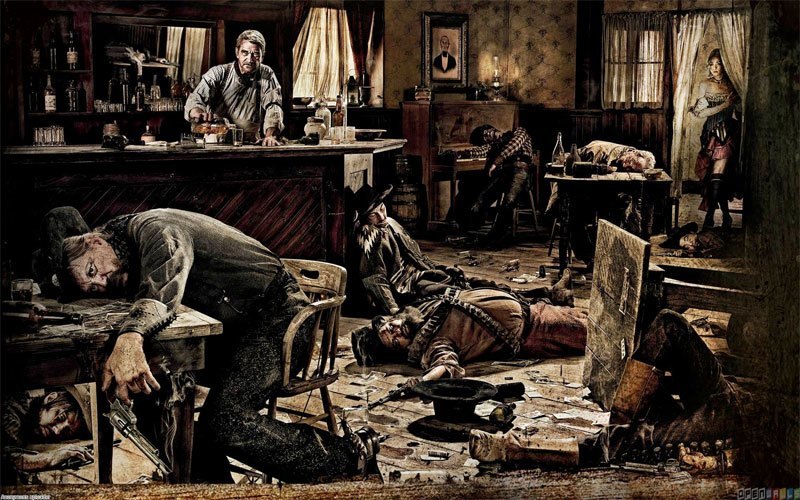
The Origin of Society derived from a-social instincts?
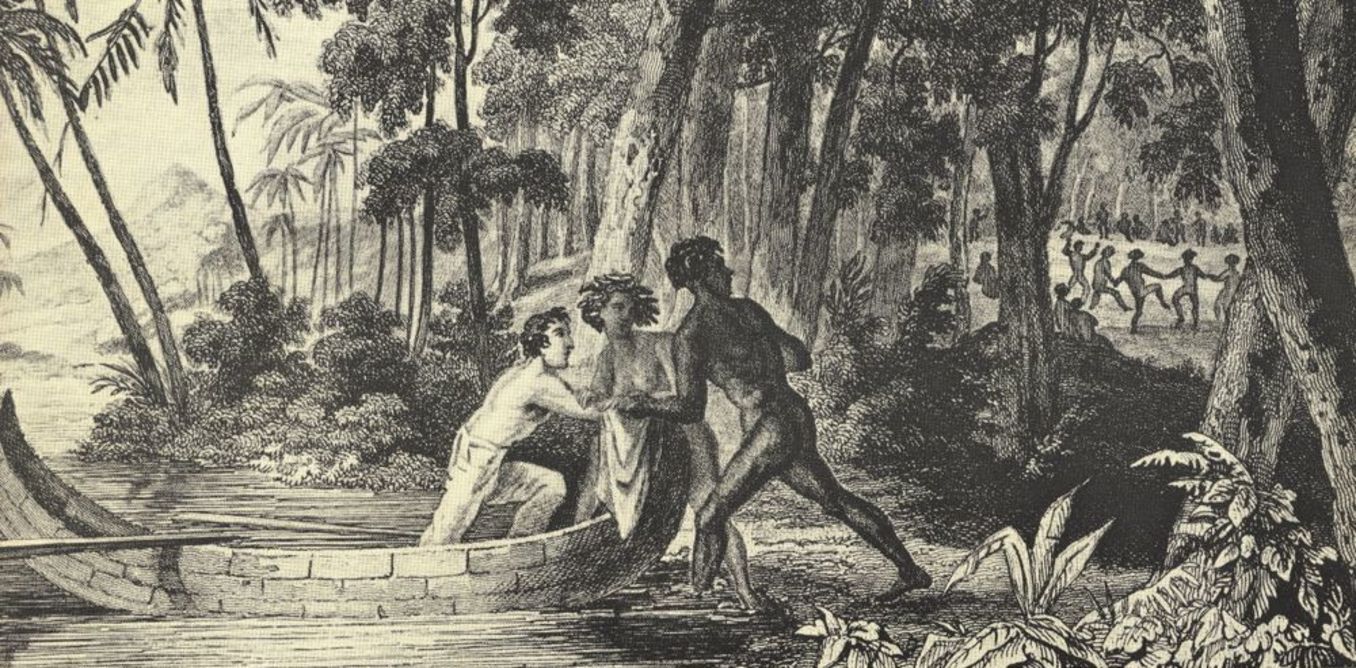
...or from "noble savages" developing a culture of caretaking and cooperation?
On this matter it becomes quite clear that it is not an impartial search for truth that this so called "science" is dealing with, as you never come across any scholars in the field being denounced as "naive" and / or romanticizing male instincts of fighting and war-making, although there are no more relevance for that standpoint than the opposite. Rather the other way around.
Its not difficult to understand, though, that the s.c. "unilineal" idea from the 19th century, about the cultural evolution unfolding in a simple developmental line from lower more "primitive" or "barbarian" stages up until the "highest" most "civilised" of the monolithic, monogamous, monotheistic patriarchal capitalist Western Culture just because it appeared chronologically later in time and / or because of ones inability to think otherwise because of ones own unreflected prejudices and lack of hermeneutic selfreflection.
But I can´t see why this would be a reason for to so cathegorically dismiss every notion of some kind of overall universal patterns or evolutionary / cultural trends in general, as there nowadays have come up quite credible analysis models in the field of systems theories and the hopeful coalescence of the earlier so disparat dichotomical two cultures of (J.P. Snow) nowadays working together in as well interdisciplinary cooperation of a multitude of different disciplines from as well nature as social sciences as humanities. The new paradigm emerging from the systems theories taking this trend even further fusing the two split cultures together into what todays is delineated as "general science"

The whole thing stinks aphephobia all the way round, and you don´t have to be Einstein to figure out from what. And now we are slowly but steadily moving towards the Pudelskern - i.e. the heart of the problem; namely how to dissolve the static tensions from the improductive eternal loop, like the cat´s chasing its tail, back and forth between the binary oppositions not moving forward one single bit.
THE ROI-SOLEIL ECLIPSING SCIENCE ITSELF
New Left Review I/62, July-August 1970
CLAUDE LÉVI-STRAUSS
A CONFRONTATION
Paul Ricoeur:
"The methodological questions I should like to ask you are of three kinds; all three concern the possibility of co-ordinating your scientific method—structuralism as a science—with other modes of comprehension which are not built on a generalized linguistic model, but consist of a recovery of meaning in reflective or speculative thought, in short, what I have myself called a hermeneutic. The first question concerns the intransigence of the method—its compatibility or incompatibility with other modes of understanding. This methodological question is directly inspired by a meditation on the particular examples you use in The Savage Mind. [1] I wonder to what extent your method’s success has not been facilitated by the geographical and cultural zone to which it has been applied, i.e. the zone of what used to be called totemism, of the ‘totemic illusion’, which is precisely characterized by the extraordinary exuberance of its syntactic arrangements, and perhaps in compensation by the great poverty of its"

ECLIPSING THE DISCIPLINES OF RELIGION AND ANTHROPOLOGY
The Lévi-Strauss follower anthropologist and evolutionary psychologist PASCAL BOYER
EXPLAINING RELIGIOUS DOMAIN NO LONGER EXISTING
Quoting Boyer:
"Claude Lévi-Strauss went further than most in renewing our understanding of universal constraints on human cultures. Surprisingly, his findings and models have had very little influence on contemporary accounts of religion.
This is because he was a proponent and an eminent practitioner the “science mode” in anthropology. Also, Lévi- Strauss clearly had no trust in the notion of “religion”. He did not believe that the term denotes any coherent set of phenomena.
He was, I will argue, quite right about that, but this of course did limit the appeal of his models for scholars of religion, many of whom do believe that there is such a domain as “religion”.
Finally, Lévi- Strauss did not relate his hypotheses on cultural phenomena to any precise cognitive models of psychological processes, for the perfectly good reason that the latter did not exist at the time he put forward the basic tenets of structural anthropology.
As a result, most structural models lack the psychological precision required to account for actual religious concepts and behaviours.
Well, well, I can tell that this fellow obviously doesn´t know anything at all about the kind of studies pursued at the religion historian institutions in Uppsala & Göteborg in Sweden, because there it is highly recommended to stick to the structural analysis-model of Lévi Strauss, although valued as not being completely adequate. Unfortunately, though, there is no better alternative at hand for the moment, as stated by Therese Rodin at page 26 in her dissertation
The World of the Sumerian Mother Goddess
An Interpretation of Her Myths

"Since the protomyths and -societies are objects of desire, they are not based in the historical context. According to Lincoln, historicizing is an antidote to these objects of desire. In this respect he criticizes both Mircea Eliade who was hostile towards historic consciousness, and Claude Lévi-Strauss, who was criticized already by contemporary existentialists, Marxists and poststructuralists. These latter meant that Lévi-Strauss’s scholarship was “a disengaged formalism and a synchronic orientation that drains mythic narra- tives [...] of their historic context and political agency”. Lincoln nevertheless finds the scholarship of Lévi-Strauss to be “the best theoretical discus- sion of myth to date”.25"
And the same is the case in this dissertation by Torsten Hylén:
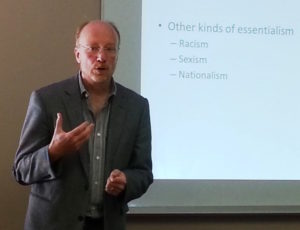
"In this study, the Karbalā´ Drama is regarded as a myth and the method used to analyze it is inspired by the structuralism of Claude Lévi-Strauss. Lévi-Straussian structuralism has probably never before been applied to early Arabic material to the extent that it is used here. The second purpose of the study, then, is to investigate to what extent and in what mode such a method is applicable to this material."
Why there no longer is a need of the kind of hermeneutic approach developed by Paul Ricoeur, which during the last half of the 20th century has been the preferred methodological tool for interpreting aesthetic and religious phenomena, is a riddle wrapped up in an enigma, as Levi-Strauss´ theories about the human brain not have been verified by later research in cognitive science and / or neurocience / neurotheology, nor are there any evidence of his analysis method according to the simplistic appliance of binary opposition being superior to Ricoeur´s, especially as he himself (at least sometimes) claims his analytic model just being intended for the interpretation of the way human brain computes binary opposition, i.e. comprising his own kind of "cognitive science", and not of the content of their myths and religion, i.e. the meaning of life, relativizing all qualitative aspects of art, religion and social life, which for example is significantly expressed by his opinion of hierarchical caste societies being of the same qualitative standards as egalitarian, due to their both of them supposed use of binary oppositions in classifying different cathegories in order to identify themselves against the "others", thereby revealing his inability of envisioning qualitative differences between a colonial hierarchical stratification for colonial suppression and a unifying egalitarian identifying of different genders and generations as well as animals from peoples in order to integrate them all in a common life-sphere of tasks and communication.
As I read the other day from the Swedish archaeologist Helena Günther, commenting the long-lasting backwash created by Christoffer Tilleys farfetched interpretations of cow elks and boats, the former representing females and the latter males, there has been a tendency in archaeology (as well as in anthropology) to move between extremes; from initially being ethnocentric biased degrading the wild "barbarians " - to the other pole of total relativism, as well as from regarding shamanism as a lower kind of processing the phenomena than science - to the other extreme; mystifying it to a higher level of sovereign spiritual and scientific cognitive activities, exclusively exerted by male shamans, though, (as equal to their own male chief priests and scientists) than what is relevant to its actual practice, integrating everybody and especially the women in the trivial daily activities in the spiritual life.
Mr Boyer has his Swedish counterpart though, in the biologist Dan Larhammar who falsly claims he has made research on experimental basis, prooving that spiritual experiences have their origin in neurological processes.

The Pope of The Holy Church of Scientism; DAN LARHAMMAR believing in Persingers God Helmet Persingers experiment by stimulating the temporal lobes, although Granqvist et al has failed to replicate it.
The religion neurologists Lars Farde and Tove Gunnarsson has in an article in Tidskriften för svensk psykiatri, with the heading:Will neurobiology be able to explain the religiosity of man? (Scroll down to page ) in wich they make a review over all kinds of experimental research, attempting to study religious experiences from a biological perspective.
In the end of this article they refer to a study made by Persinger in Canada, who is claiming to be able to evoke spiritual experiences by stimulating the right frontal lobe with weak magnetic fields.
The fact that individuals with temporal lobe epilepsy more frequently than others get paranormal experiences has made him draw the conclusion that spiritually experiences are evoked by the same mechanisms as evoke epileptic attacks. Furthermore he is of the opinion that religious experiences most probably only can be produced by the human brain and that the reason to their existence are the fact that there are natural variations in the magnetic fields in the earth.
In Sweden this findings of Persinger have got an ardent spokesman in Dan Larhammar, professor in molecular cellbiology at the university of Uppsala and furthermore member of the society called Vof= Vetenskap ooh folkbildning (Science and Popular Adult Education) which has taken it as a voluntarily task to keep watch over peoples minds in order to keep their ranks closed in the direction of its own Holy Stronghold of Scientism.
Larhammar, who delivers degrading distinctions to Swedish intellectuals who are not subduing to his narrow-minded worldview, is himself promulgating the doctrine that religious experiences have its origin in the human nerve system, although nothing like that ever could be proved, thats for sure!
And when a Swedish group of researchers under the lead of Pehr Granquist at the University of Uppsala have tried to repeat Persingers experiment, they weren´t able to replicate his findings.
Both of the researches have thereafter attempted to explain the reasons to the discrepancy of the other, by blaming its methodological shortcomings.
_________________________________________________________________________________________________
CLAUDE LÉVI-STRAUSS´ MODE OF SCIENCE
Susan M. Voss at the University of Nebraska writes in: Claude Lévi-Strauss; The Man and his works:
"In 1938, having resigned from the University of Sao Paulo, he (Claude Lévi- Strauss) obtained from the French Government financial support for an extensive expedition to central Brazil. While on the move much of the time, Levi-Strauss collected enough material on the Nambik-wara and Tupi-Kawahib Indians to provide the basis for one of his best-known publications, Tristes Tropiques.
Going in search of infinite variety, and expecting to find either bloodthirsty cannibals or Rousseau-like noble savages", Levi-Strauss instead discovered the common humanity of mankind. He came to recognize that the similarities between himself and the long-isolated Nambikwara far out-weighed the differences.
Levi-Strauss' (.recognition.of lICertain fundamental properties of the physical and psychical universe" (Levi-Strauss 1973b:61), was to become a recurrent theme in all of his writings.
However, it.is important to mention that in spite of his experience, the actual concrete ethnographic data which Levi-Strauss compiled at this time could not have been of the quality which we have come to expect from Malinowski-style, fieldwork.
IIi ·the whole course of his Brazilian travels, Levi-Strauss could not have spent more than a few weeks at a time in anyone place; nor was he ever to converse easily with any of his informants in their native language.
In his subsequent writings, he assumes that the initial "model" generated by an observer's first impressions actually represents ethnographic reality.
It has become apparent in recent etic/emic anthropological theorizing that such a first stage model can be little more than the observers' own pre-packaged suppositions.
This type of data can hardly be considered impeachable source material on which to base the foundation of one's life work.
But my primary criticism of Levi-Strauss in this regard is not that
he has relied so heavily on insufficient fieldwork, but that when called to defend his position wherever other data runs counter to his theories, he will either by-pass the evidence or sidestep the issue all together. (cf.H arris 1968: 499-512). Any data is acceptable as long as it correlates with his calculated expectations.
One is reminded of Levi-Strauss' training in philosophy and his behavior is that of an advocate defending· a cause rather than that of a scientist in pursuit of truth."
_________________________________________________
